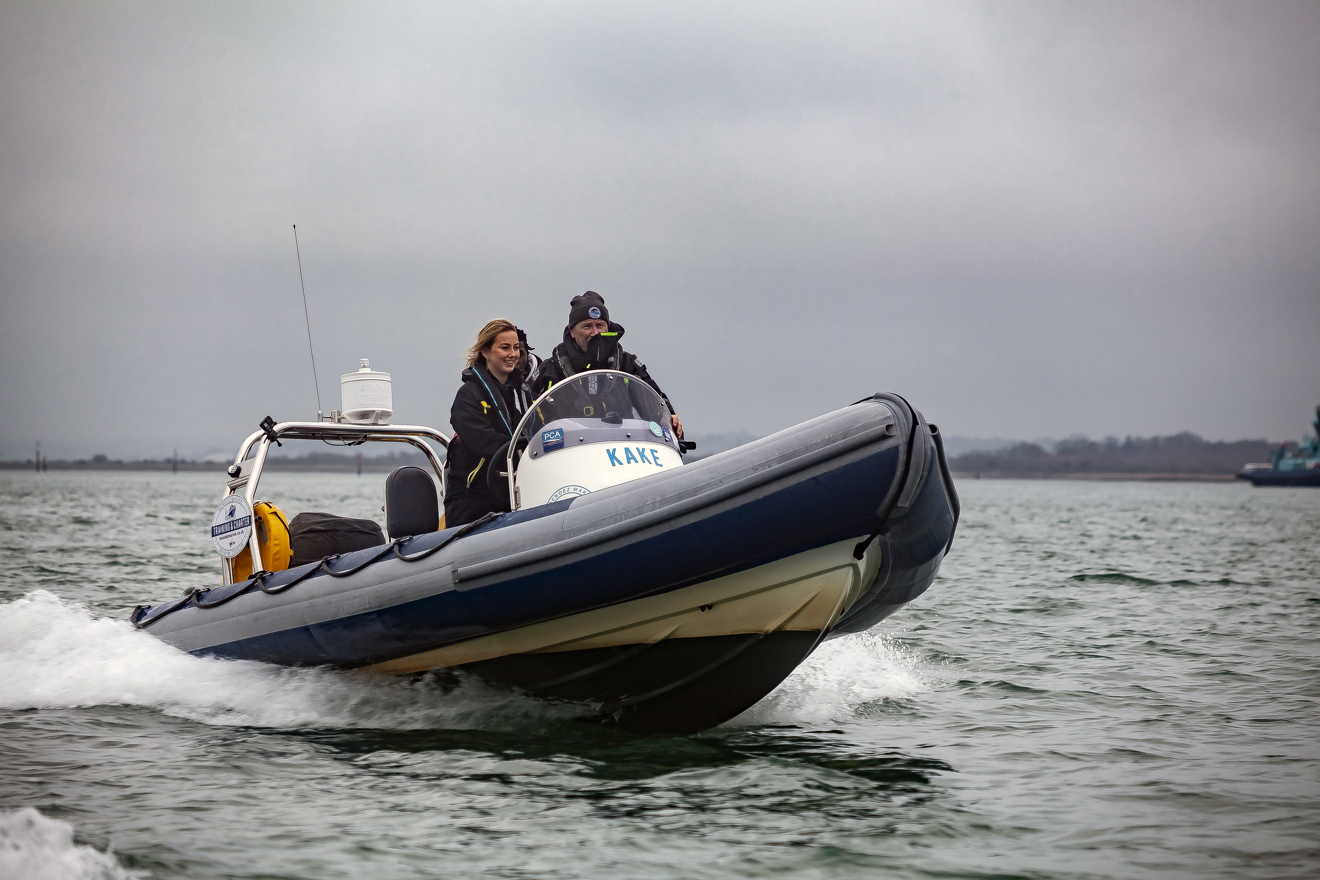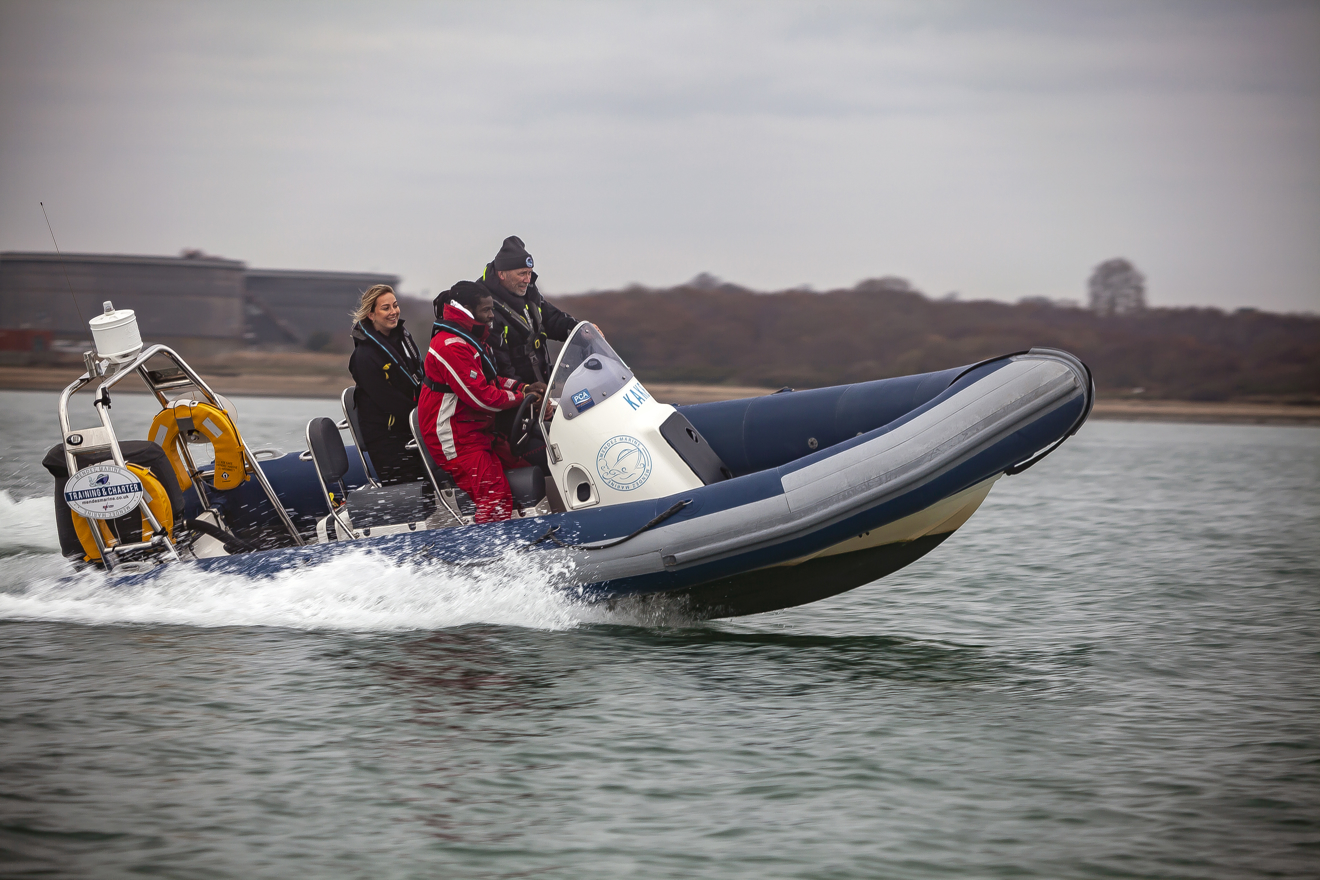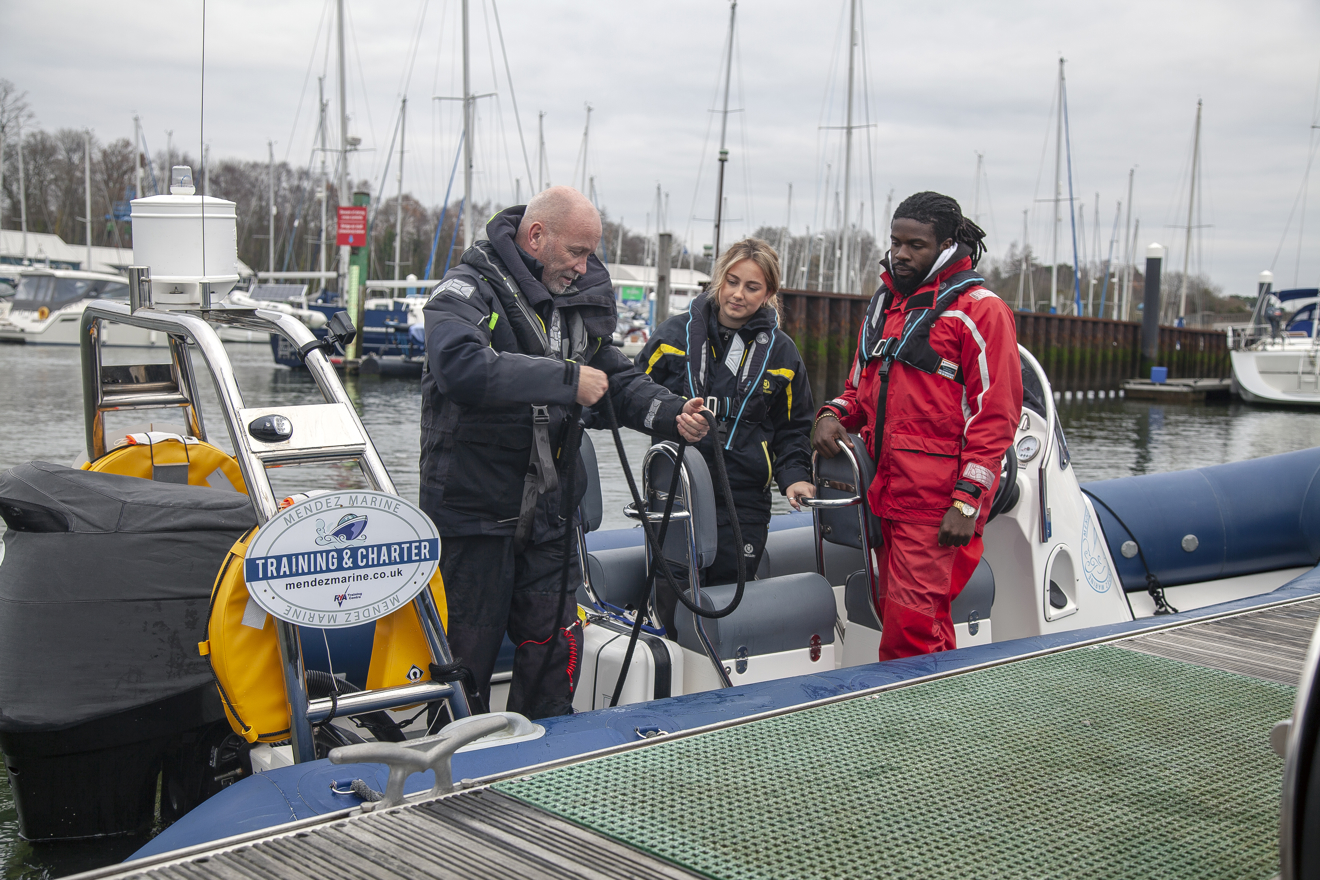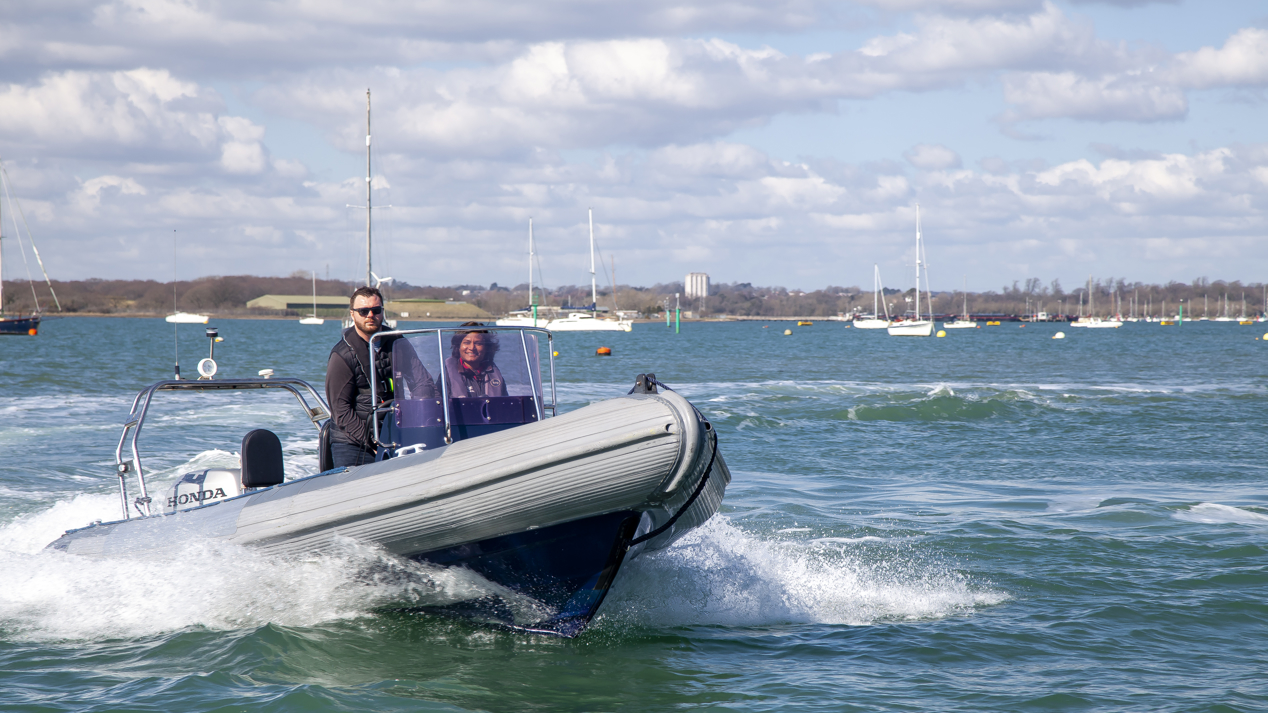Weather, wind and waves
Former RYA Powerboat Trainer and Head of Lifesaving at the RNLI, Howard Ramm, covers staying safe in rough weather and understanding the waves
It was during the early 90’s that I first started testing the limitations and capabilities of power craft, primarily in the Cornish coasts surf zones. I recognised early on that a good appreciation of weather, wind and waves was essential. However, I’d never dedicated enough time to understanding their intricacies.
The need to routinely find the biggest waves for teaching extreme weather handling to lifeboat crews taught me to interpret the elements to my benefit. Working with the Royal Yachting Association (RYA) in the early days of the Advanced Powerboat Scheme showed me just how much I was using this every day and how much of a ‘weather watcher’ I’d become.
20 years on, this experience allows me to enjoy not getting so wet, battered, and bruised, or thankfully, not having to file lengthy capsize reports!
Know your boat
Even with a good understanding of the external elements, you must take time to get to know your RIB’s design. In general terms, it is unlikely that a RIB designed for top speed performance will have exceptional rough weather capability.
At slower speeds RIBs tend to come out of the water up-sea. With slimmer tubes in the bow area, reducing their buoyancy, a RIB might be at risk of burying the bow in steep waves down-sea.
Conversely, a boat with extremely good rough weather characteristics may not deliver the top speed adrenaline you seek. So, think carefully about the sort of experience you want your RIB to provide you, ideally before buying!

When and where to go
It’s important to make informed decisions about when and where to go afloat for maximum enjoyment. And if you don’t know, then to question: ‘should you go at all?’
If it’s blowing 16+ knots with a 1m swell it’s probably not going to be an enjoyable family day out. Add an unfortunate change in tidal direction halfway through your passage and things are only going to get worse.
Where to start?
Use weather apps, providing comprehensive past and future timelines. These allow for a real-time understanding of how the sea state will alter in various areas.
In your local area you may already know how wind and waves interact with the seabed and land features to produce very different sea states. Ask yourself what is causing the differences: depth, tidal direction (such as behind headlands), or speed (due to a reduction in depth of water or width through narrows), an alteration in the direction of the coastline and so on.
Wave height
Wind strength and duration, the expanse of sea it has travelled across, and its direction, all directly contribute to wave height. If the tidal stream is running the opposite way this may be significantly increased – less on small range tides but more on larger ones. It’s not only important to look at the current ‘imminent’ forecast, but also to look backwards and forwards to establish the full picture.
There seems to be a human fascination with wave height. I’ve heard many a bar discussions about the size of waves people have been out in. I mention this because interestingly wave height isn’t, in isolation, necessarily an issue.
The issue is breaking waves and the volume of water in the section that breaks. At this point the energy shifts from travelling through the water, to the water moving and becoming a force which can overturn a RIB.
Before this point there is little risk, if the helmsman adjusts speed to prevent the boat from leaping out of the water - therefore avoiding crests is a good tactic.

Top takeaways
There are many aspects to successfully negotiating a rough weather passage. Most should take place before departure such as maintenance, pre-departure checks, securing equipment, knowing your capabilities, and deciding whether to get on the water. However, here are some top tips for driving in waves should you need to:
Up sea: Reduce speed and keep the boat in the water, trim in (bow down) and face any breaking waves square on the bow. You do not need speed to transit a breaking wave, but you do need some power. Reduce speed as you approach, then apply power as you enter the crest and reduce it again once about 30% of the hull is through the wave.
Down sea: Trim out slightly (bow up) running down-sea. It is dangerous to overtake steep swells due to the risk of burying the bow, proceed gradually and ensure the bow is fully supported by the water before moving down the wave. Do not overtake steep or breaking waves. If in doubt, stay behind the swell until it dissipates, then proceed to the next.
Across sea: Wavelength needs to be at least 2-3 boat lengths to allow enough space to turn towards or away from a steep or breaking wave, though with caution good progress can be made. Use alterations of speed and course to avoid breakers and avoid running across the sea if waves are starting to break heavily. Look for areas of flatter water, which could be closer to a weather shore, less tide or deeper water depending on location.
Remember, RIBS will go through moderate waves, in a little over ‘tick over’ ahead and run down sea safely if trimmed properly and travelling at a speed that matches the waves. It is the people that decided to go too fast, sit beam on and launch despite the weather forecast who will find themselves in difficulty.
Get trained
The RYA Powerboat scheme is designed to take you from basic boat handling, right through to carrying out more challenging coastal and night passages. You’ll also cover essential safety and theory knowledge along the way.

Recommended reading
For supporting information, make sure to check out the RYA Powerboat Handbook (G13) and RYA Advanced Powerboat Handbook (G108).
Written by RYA Powerboat Trainer, Paul Glatzel, these publications will help you acquire the knowledge and confidence to make the most of your time on the water.
Explore our safety hub
For more information about staying safe on the water visit the RYA Safety hub.

